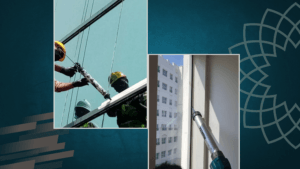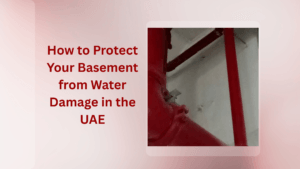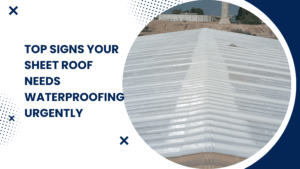Glass has become a popular material in modern construction for its elegance, transparency, and sleek aesthetics. However, glass joints — the seams where glass panels meet each other or other materials — are potential weak spots when it comes to moisture. In humid environments, these joints are particularly vulnerable, making glass joint waterproofing essential for long-lasting protection.
Whether it’s your home, office, or high-rise building, maintaining waterproof glass joints ensures both the structure’s beauty and durability. Let’s dive into how you can keep those joints sealed tight and your structure safe in humid conditions.
Why Humidity Is a Threat to Glass Joints
Humidity introduces excessive moisture into the air. Over time, this moisture can:
- Penetrate unsealed or poorly sealed joints
- Cause mold and mildew growth
- Lead to material deterioration and leaks
- Damage adjacent structural elements like wood, metal, or drywall
That’s why glass joint waterproofing isn’t a one-time task — it’s a maintenance responsibility.
1. Use High-Quality Waterproof Sealants
The first step to long-lasting waterproofing is choosing the right materials. Not all sealants are created equal.
Best options for humid climates:
- Silicone-based sealants: Flexible, durable, and mold-resistant
- Polyurethane sealants: Strong adhesion and weather resistance
- Hybrid sealants: Combine the benefits of silicone and polyurethane
Ensure the sealant used is specifically rated for high-humidity or coastal environments.
2. Inspect Regularly — Especially After Heavy Rain
Perform regular visual checks of all glass joints, especially if you live near the coast or in an area with high rainfall. Look for:
- Cracks or gaps in the sealant
- Discoloration (a sign of mold or mildew)
- Fogging between glass panes
- Water stains on adjacent surfaces
Even a tiny crack can let moisture seep in, so early detection is key.
3. Clean Glass Joints Properly
Dirt and grime can deteriorate sealants over time. Cleaning your glass joints the right way not only enhances appearance but also extends waterproofing lifespan.
Cleaning tips:
- Use a soft cloth and non-abrasive cleaner
- Avoid harsh chemicals like bleach or ammonia, which can weaken the sealant
- Rinse thoroughly and dry the joints after cleaning
This is particularly important in humid climates, where mold and mildew can develop quickly.
4. Reseal Every Few Years
Even the best waterproofing solutions degrade over time due to UV exposure, weathering, and temperature fluctuations. In high-humidity areas, resealing is recommended every 3–5 years, depending on the type of sealant and environmental exposure.
Pro Tip: Always remove old sealant before applying new. Layering fresh sealant over damaged or cracked material won’t provide proper protection.
5. Ventilation Helps Prevent Condensation
Poor ventilation can lead to condensation buildup, especially in enclosed glass spaces like balconies, sunrooms, or office partitions. This constant dampness accelerates wear on sealants and invites mold.
Ways to improve ventilation:
- Use exhaust fans or dehumidifiers
- Install windows that allow cross-ventilation
- Keep doors slightly ajar in glass-heavy areas
Reducing indoor humidity directly supports your glass joint waterproofing efforts.
6. Call Professionals for Annual Maintenance
If your structure has complex or large-scale glass installations (e.g., curtain walls, glass facades, skylights), it’s wise to get professional inspections at least once a year.
Professional waterproofing technicians will:
- Conduct detailed leak detection
- Replace old or ineffective sealants
- Apply waterproof coatings if needed
- Ensure your joints meet safety and structural standards
Investing in expert service prevents costly repairs later.
7. Choose the Right Waterproofing System
For extreme humidity or coastal locations, standard sealants might not be enough. In such cases, a combination of techniques may be necessary:
- Double-layered sealing systems
- Backer rods to support wider gaps
- Waterproof membranes around critical joints
Discuss options with your contractor to choose a solution tailored to your environment.
Final Thoughts
Maintaining waterproof glass joints in humid environments is not just about preventing leaks — it’s about protecting your investment, health, and the structural integrity of your building. With regular inspections, proper cleaning, high-quality sealants, and professional help, your glass joint waterproofing will stand strong against moisture for years to come.
Don’t wait for signs of damage. Make waterproof maintenance part of your routine — your property (and your wallet) will thank you.






